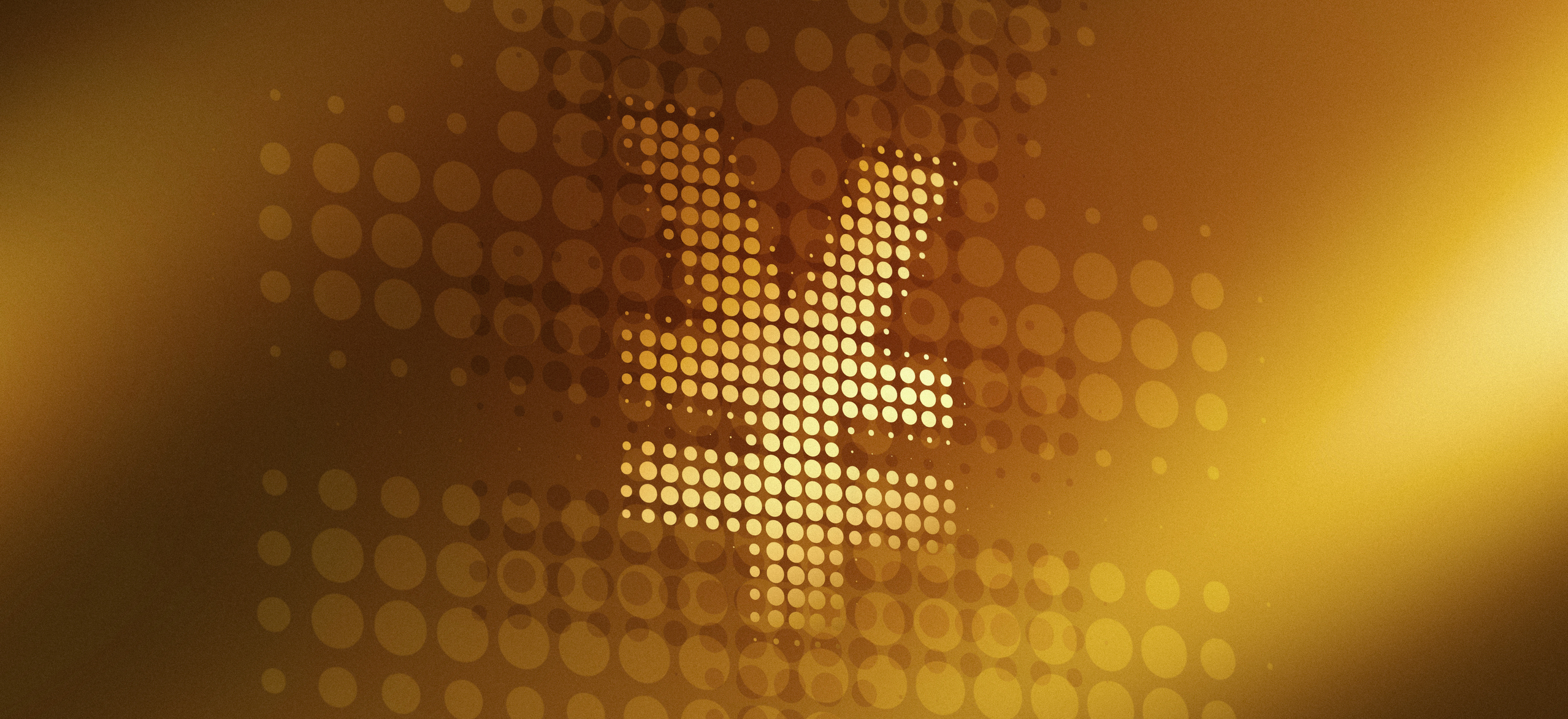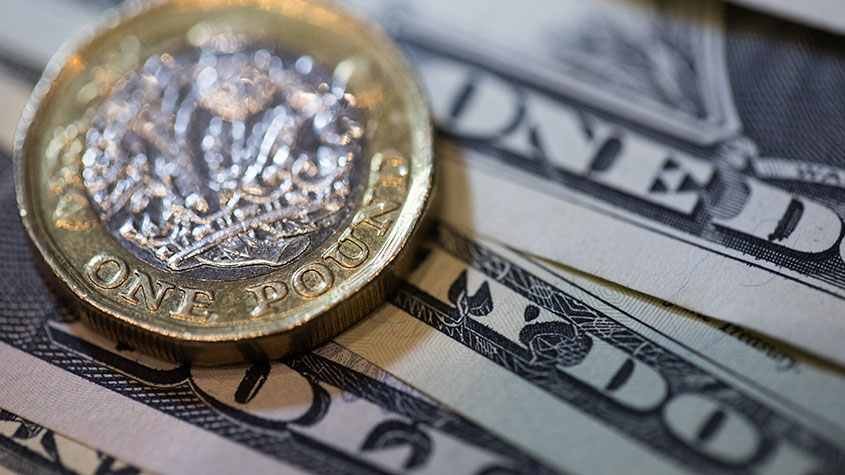Will the market crash again? Watch the US dollar for clues
One of the biggest driving factors behind the market’s recent big sell-off was the bounce in the US dollar. John Stepek explains why the price of the dollar matters so much, and why investors should keep a keen eye on it.


We’ve discussed the mini-crash/rapid correction in the Nasdaq index quite a few times over the past week or so.
One thing we haven’t mentioned much though is the most obvious driving force behind the sell-off.
That is, the sudden rebound in the US dollar.
MoneyWeek
Subscribe to MoneyWeek today and get your first six magazine issues absolutely FREE

Sign up to Money Morning
Don't miss the latest investment and personal finances news, market analysis, plus money-saving tips with our free twice-daily newsletter
Don't miss the latest investment and personal finances news, market analysis, plus money-saving tips with our free twice-daily newsletter
Why the price of the dollar matters so much
As I’ve mentioned before on many occasions, the cost of the US dollar is arguably the most important price in the world.
Dollars are involved in most cross-border transactions. Dollars are the closest thing to a universally accepted fiat currency that we have. The dollar is the global reserve currency. Almost everybody involved in any sort of trade needs access to dollars.
What’s the “price” of the US dollar? Well, it’s whatever it costs you to buy it when you don’t have any. So for a British person it would be the pound-dollar exchange rate, for example.
You can get an idea of how the dollar is trading against the other big currencies by looking at the DXY index. This looks at how expensive the dollar is relative to a basket of currencies of its biggest trading partners.
When the DXY goes down, the dollar is getting cheaper. When the DXY goes up, the dollar is getting more expensive.
If the dollar is getting cheaper, it means it’s easier to get hold of. In other words, a weaker dollar effectively acts as a stimulus for the entire world. If dollar policy is loose, then global monetary policy is loose.
This is only a slight simplification. You can already see that the Federal Reserve – America’s central bank – has embraced the role of global liquidity provider of last resort. That’s a role it started to realise it had during the 2008 financial crisis, and it’s one that it has unquestioningly accepted during Covid-19.
The Fed didn’t just make sure that money was cheap for Americans, it made sure that wobbly overseas markets could get hold of as many dollars as they needed too (via “swap lines”, which we won’t delve into right now).
Anyway, you hopefully get the point. All else being equal, when the dollar is expensive, it’s a sign that it’s getting harder for everyone around the world to get hold of money. In turn, that’s not great news for risk assets – tighter monetary policy usually makes stocks go down.
So how does this all relate to what’s going on right now?
How the stronger euro helped the Nasdaq’s stellar run higher in August
Earlier this year, the European Union managed to agree a deal on a joint Covid-19 recovery fund. That eased fears that the EU was heading for another big shouting match, and as a result, helped to boost the euro.
A rising euro will tend to mean a weaker dollar, as the euro is the second-most widely-used currency in the world (though second place is a very very long way behind first).
The euro really broke higher against the dollar from about mid-to-late July, which is when the deal was finally signed off after the usual late night marathon conferences. The euro then hit its most recent high at the end of August.
You may be interested to note that this same period from mid-to-late July to the end of August coincides with an absolutely hysterical run higher for the Nasdaq.
That all changed as September broke. Why? Well, at least one reason is because the European Central Bank (ECB) started to get twitchy about the exchange rate.
Here’s the problem: the world is locked in a currency war. It’s a quiet war. No one admits that it’s going on. But everyone wants a weaker currency because it helps to boost inflation (in theory at least). And Europe arguably needs it more than most because it’s good for exports from Germany, and helpful for tourism in the southern countries (not that there’s much of that right now unfortunately).
So while a rising euro would have been welcomed at first – it’s a nice vote of confidence – if it gets too strong too fast, that’s a different matter.
As a result, we started to get mutterings from various ECB members that while they don’t target the euro exchange rate, it did matter. Which is a nice way of saying – "actually, we kind of do target the euro exchange rate, and we’re looking at it right now".
In turn, that meant investors were edgy going into the ECB press conference yesterday. They wondered whether Christine Lagarde, current boss of the ECB, would take the chance to push the euro down, either by hinting at future action, or just “jawboning” – acting as if she was about to do something. That’s the sort of thing that Mario Draghi would have done.
But Lagarde was having none of it. If she’s bothered about the euro yet, she didn’t show it. And markets being markets, took the absence of a “no”, to mean “go ahead” – so they sent the euro higher. In turn, that weakened the dollar, and it helped to boost riskier assets (precious metals included).
Now that might not last. But the fact that the ECB team hasn’t yet decided to step in suggests there might be further for the euro to go. Capital Economics reckons there is scope for “modest further appreciation”.
There’s nothing particularly scientific about this. But as you may have gathered, markets themselves aren’t particularly scientific either. And it’s useful to have simple indicators to monitor – it helps you to feel on top of what’s going on, which does reduce the temptation to panic and over-react.
So keep an eye on the US dollar. If it turns up decisively, then that’s likely to be bad news for markets. But until then, it seems quite possible that the Nasdaq slide we just saw might be over for the time being. It might not leap right back up – and September is a sticky old month historically for markets – but I certainly wouldn’t assume that the only way is down.
For more on all of these topics, subscribe to MoneyWeek magazine – get your first six issues free here now.
Get the latest financial news, insights and expert analysis from our award-winning MoneyWeek team, to help you understand what really matters when it comes to your finances.
John Stepek is a senior reporter at Bloomberg News and a former editor of MoneyWeek magazine. He graduated from Strathclyde University with a degree in psychology in 1996 and has always been fascinated by the gap between the way the market works in theory and the way it works in practice, and by how our deep-rooted instincts work against our best interests as investors.
He started out in journalism by writing articles about the specific business challenges facing family firms. In 2003, he took a job on the finance desk of Teletext, where he spent two years covering the markets and breaking financial news.
His work has been published in Families in Business, Shares magazine, Spear's Magazine, The Sunday Times, and The Spectator among others. He has also appeared as an expert commentator on BBC Radio 4's Today programme, BBC Radio Scotland, Newsnight, Daily Politics and Bloomberg. His first book, on contrarian investing, The Sceptical Investor, was released in March 2019. You can follow John on Twitter at @john_stepek.
-
 FCA proposes new ratings system for workplace pension schemes
FCA proposes new ratings system for workplace pension schemesThe City watchdog has proposed new rules to help ensure pension schemes are providing value for money
-
 Fund inflows hit a six-month high in November – where are investors putting their money?
Fund inflows hit a six-month high in November – where are investors putting their money?Investors returned to the financial markets amid the Autumn Budget in November 2025 but caution remains.
-
 The challenge with currency hedging
The challenge with currency hedgingA weaker dollar will make currency hedges more appealing, but volatile rates may complicate the results
-
 What's behind the big shift in Japanese government bonds?
What's behind the big shift in Japanese government bonds?Rising long-term Japanese government bond yields point to growing nervousness about the future – and not just inflation
-
 It's time to back the yen, says Dominic Frisby
It's time to back the yen, says Dominic FrisbyThe Japanese yen has been weak for a long time, says Dominic Frisby. That may soon change.
-
 Why you should keep an eye on the US dollar, the most important price in the world
Why you should keep an eye on the US dollar, the most important price in the worldAdvice The US dollar is the most important asset in the world, dictating the prices of vital commodities. Where it goes next will determine the outlook for the global economy says Dominic Frisby.
-
 What is FX trading?
What is FX trading?What is FX trading and can you make money from it? We explain how foreign exchange trading works and the risks
-
 The Burberry share price looks like a good bet
The Burberry share price looks like a good betTips The Burberry share price could be on the verge of a major upswing as the firm’s profits return to growth.
-
 Sterling accelerates its recovery after chancellor’s U-turn on taxes
Sterling accelerates its recovery after chancellor’s U-turn on taxesNews The pound has recovered after Kwasi Kwarteng U-turned on abolishing the top rate of income tax. Saloni Sardana explains what's going on..
-
 Why you should short this satellite broadband company
Why you should short this satellite broadband companyTips With an ill-considered business plan, satellite broadband company AST SpaceMobile is doomed to failure, says Matthew Partridge. Here's how to short the stock.
